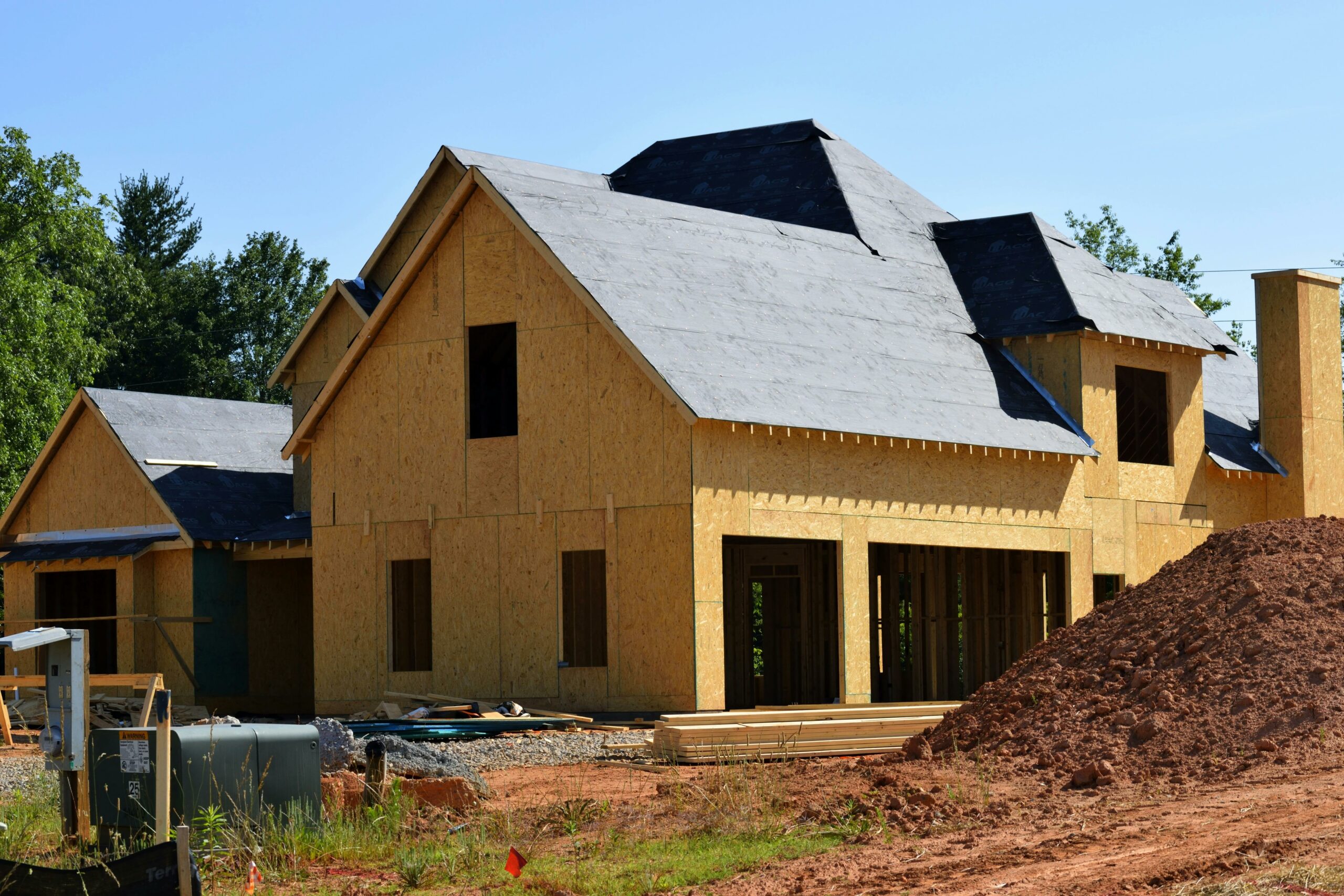Fix and flip deals are a popular way to invest in real estate, offering the potential for significant profit in a relatively short period. However, they also come with their own set of risks and challenges. Knowing how to analyze a fix and flip deal is crucial for success in this venture. In this blog post, we’ll explore the key steps and considerations involved in this process.
Understanding the Market
Comprehensive Market Analysis
Analyzing a fix and flip deal begins with a comprehensive understanding of the local real estate market. This involves more than just a cursory glance at property prices. You need to delve into the nuances of the market, understanding trends over time, not just current snapshots.
Key Factors to Consider
- Housing Price Trends: Look at how housing prices have been moving in the past few years. Are they on an upward trajectory, stable, or declining? This can give you an idea of the market’s health and potential future direction.
- Average Time on Market: This metric tells you how long properties typically stay on the market before being sold. Shorter times indicate a seller’s market with high demand, while longer durations may signal a buyer’s market.
- Demand for Homes: Understanding the demand in your target area is crucial. High demand areas usually ensure quicker sales post-renovation but also might come with higher purchase prices.
- Neighborhood Dynamics: Look for neighborhoods that are in the process of gentrification or have shown steady growth. Factors such as new developments, improvements in infrastructure, and changes in demographic profiles can be indicators of potential growth.
- Economic Indicators: Local employment rates, the presence of major employers, and other economic factors can significantly impact the real estate market.
- Seasonal Variations: Some markets have strong seasonal fluctuations. Knowing the best times to buy and sell in your specific area can be a significant advantage.
Utilizing Data and Resources
- Real Estate Platforms: Use online real estate platforms to gather data on recent sales, price trends, and market dynamics.
- Local Realtors: Engage with local realtors who have in-depth knowledge of the area. They can provide insights that aren’t immediately apparent from data alone.
- Networking: Connect with other real estate investors and professionals. Networking can offer invaluable insights into the local market.
Evaluating the Property
Initial Assessment
When embarking on a fix and flip project, the evaluation of your potential property is a critical step that goes beyond just a cursory glance. This is where your investment starts to take shape, and your decisions here can significantly impact your overall success.
Look for Ideal Properties
- Focus on Cosmetic Updates: Target homes that primarily require cosmetic updates. These are generally less expensive and faster to complete compared to structural changes. Cosmetic updates can include painting, flooring, fixtures, and landscaping.
- Avoid Major Structural Repairs: Be cautious of properties that need major structural work. These can include foundation repairs, significant plumbing or electrical overhauls, or roof replacements. Such repairs are often more costly and time-consuming, reducing your profit margin and extending your timeline.
- Assess the Layout and Design: The property’s layout is a crucial factor in its appeal to future buyers. Open floor plans are currently in high demand as they offer versatility and a sense of spaciousness. Properties with such desirable features can often sell quicker and possibly for a higher price.
Key Elements to Evaluate
- Functional Layout: Ensure the layout makes sense for potential buyers. For instance, an awkwardly placed bathroom or a bedroom accessible only through another bedroom can be major drawbacks.
- Natural Light: Homes with ample natural light are more appealing. Assess the placement and size of windows.
- Storage Space: Adequate storage space, like closets and pantries, adds to the property’s practicality.
- Curb Appeal: First impressions matter. The property’s exterior and landscaping can significantly impact a buyer’s perception.
Professional Inspection
A professional inspection is indispensable for revealing hidden issues that could profoundly affect both your budget and project timeline.
The Importance of a Thorough Inspection
- Comprehensive Check: A professional inspection goes far beyond a superficial review. It delves into the core systems of the house, including plumbing, electrical, HVAC, roofing, and structural integrity.
- Identifying Hidden Issues: Inspectors are trained to uncover problems that may not be visible to the untrained eye. This includes hidden issues like outdated wiring, subpar plumbing, foundation cracks, or even pest infestations.
- Future Cost Implications: Understanding the extent of these issues is crucial. Some problems, like minor electrical fixes, might be relatively inexpensive to address. In contrast, significant issues like foundation repairs can be extremely costly and time-consuming.
The Role of the Inspector
- Expert Analysis: A qualified inspector brings expertise in building codes, construction standards, and the identification of potential safety hazards. Their report provides an objective assessment of the property’s condition.
- Detailed Reporting: The inspector’s report will detail the condition of each aspect of the property, often with photographs and descriptions. This report becomes a valuable tool in planning your renovation project.
- Consultation: Use the inspection as an opportunity to consult with the inspector. Ask questions and get clarifications on any concerning areas. Their insights can guide your decision-making process.
Leveraging the Inspection Findings
- Budget Adjustment: Use the inspection report to adjust your renovation budget. It helps in allocating funds more accurately for the necessary repairs and updates.
- Negotiation Leverage: If significant issues are uncovered, this can provide leverage in negotiating a lower purchase price, reflecting the additional investment required to address these problems.
- Informed Decision Making: Sometimes, an inspection might reveal that a property requires more work than it’s worth. This can be a crucial factor in deciding whether to proceed with the purchase or look for a better opportunity.
Take your real estate investing to new heights with Oambase, our advanced property investment analysis software. Streamline your deal analysis, access comprehensive market data, and make informed, profitable decisions with ease. Start your journey towards smarter investing today!
Crunching the Numbers
Purchase Price
The purchase price of a property is the cornerstone of your fix and flip investment. It is the first and perhaps the most significant figure in your financial equation. Getting this number right is crucial for ensuring a healthy profit margin.
Strategic Assessment of Purchase Price
- Comparative Market Analysis (CMA): To determine a fair purchase price, conduct a detailed Comparative Market Analysis. This involves examining the prices of recently sold properties that are similar in size, location, and features to your target property.
- Understanding the Market Value: The goal is to understand the true market value of the property. This knowledge helps in making an informed offer that reflects both the current state of the property and its potential value post-renovation.
- Factor in Renovation Costs: Your offer should not only consider the market value but also the cost of renovations needed. The ideal purchase price is one where the sum of the buying price and renovation costs leaves a comfortable margin when compared to the projected after-repair value (ARV).
- Negotiating the Deal: Armed with your CMA and an understanding of renovation costs, negotiate a purchase price that aligns with your investment strategy. Remember, every dollar saved on the purchase price directly increases your potential profit.
Key Considerations
- Market Dynamics: Be aware of the current real estate market trends. In a seller’s market, you might face higher prices and more competition, requiring a quicker decision-making process.
- Property Potential: Consider the potential value-add of the property. A lower-priced property in need of significant work might not always be a better deal than a slightly higher-priced property requiring minimal updates.
- Investment Threshold: Determine your maximum allowable offer (MAO) based on your budget, the estimated renovation costs, and the desired profit margin. This helps in making disciplined investment decisions.
Renovation Costs
Accurate estimation of the renovation costs can significantly influence the profitability of your project. It’s not just about how much you spend, but how wisely you allocate your renovation budget.
Detailed Cost Breakdown
- Material Costs: List out all the materials required for the renovation. This includes everything from paint and flooring to fixtures and fittings. Shop around to get the best deals without compromising on quality. Remember, the quality of materials can directly impact the property’s appeal and value.
- Labor Expenses: Evaluate the cost of labor for the work that needs to be done. If you have skills in certain areas, you might save money by doing some work yourself. However, be realistic about your capabilities and the time you can commit.
- Professional Services: For tasks that require specific expertise, such as electrical work, plumbing, or structural modifications, factor in the cost of professional services. Always hire licensed and experienced contractors to ensure quality work that meets building codes.
- Permit Costs: Check with your local municipality for any permits required for your renovation work. These permits have a cost, which varies depending on the scope of work and location.
- Contingency Fund: It’s essential to set aside a contingency fund, typically 10-20% of your total renovation budget. This fund covers unexpected expenses that often arise during renovations, like hidden damages or material cost overruns.
Realistic Cost Evaluation
- Do-It-Yourself (DIY) vs. Professional Help: Be realistic in assessing what you can handle yourself and what requires professional intervention. DIY can reduce costs but can also be time-consuming and potentially less efficient if you lack the necessary skills.
- Time vs. Money Trade-off: Consider the trade-off between time and money. While DIY might save money, it can extend your project timeline, which in turn can increase holding costs.
- Quality vs. Cost: Strike a balance between quality and cost. Investing in key areas that appeal to buyers, like kitchens and bathrooms, can significantly increase the property’s marketability.
Holding and Selling Costs
Holding and selling costs are the expenses incurred from the time you purchase the property to the time you sell it.
Holding Costs
- Property Taxes: Calculate the property taxes for the duration you plan to hold the property. Remember, taxes can vary greatly depending on the location.
- Insurance: Factor in the cost of insuring the property during the renovation and holding period. This might include standard homeowner’s insurance and possibly additional coverage for a vacant property undergoing renovation.
- Utilities: Keep in mind the utility costs, which include electricity, water, gas, and possibly others, depending on the property and the extent of the work being done.
- Financing Costs: If you’re using financing options like a loan or mortgage, include the interest and any other associated financing costs in your calculations.
Selling Costs
- Real Estate Agent Commissions: Typically, this is a significant expense, often around 5-6% of the sale price, paid to the real estate agents involved in the sale.
- Closing Costs: These vary but can include title insurance, transfer taxes, escrow fees, and other administrative costs associated with closing a real estate transaction.
- Staging and Marketing: If you opt for professional staging or specific marketing strategies to sell the property, include these costs as well.
Navigating These Costs
- Plan and Budget: From the outset, include these holding and selling costs in your overall budget. This helps in determining the true cost of the project and the minimum sale price needed to achieve your desired profit.
- Time Factor: Remember, the longer you hold onto the property, the more you’ll spend in holding costs. Efficient renovation and a swift sale can significantly reduce these expenses.
- Negotiating and Shopping Around: For selling costs, don’t hesitate to negotiate with service providers or shop around for better deals, especially when it comes to hiring real estate agents or choosing staging services.
Establishing the After Repair Value (ARV)
The ARV is an estimate of what the property will sell for once all renovations are completed.
Calculating the ARV: A Data-Driven Approach
- Analyzing Comparable Sales (Comps): The most reliable way to estimate the ARV is by analyzing recent sales of similar properties in the same neighborhood or area. Look for properties that are similar in size, style, age, and have comparable features and amenities.
- Adjusting for Renovations: When comparing your property to others, adjust the value based on the extent and quality of your planned renovations. High-quality renovations in key areas like kitchens and bathrooms can significantly boost the ARV.
- Consulting with Professionals: Real estate agents and appraisers with local market expertise can provide valuable insights into accurately determining the ARV. Their experience and knowledge can help refine your estimate.
Using ARV to Gauge Potential Profit
- Calculating Potential Profit: The potential profit is calculated by subtracting the total investment (the sum of the purchase price, renovation costs, and holding costs) from the ARV. This gives you a clear picture of the financial viability of the project.
- Setting a Benchmark for Investment: Knowing the ARV helps in setting a ceiling for your total investment. It acts as a benchmark to ensure that your purchase price and renovation costs do not exceed a level that makes the flip unprofitable.
- Risk Assessment: A conservative estimate of the ARV allows for a buffer to accommodate market fluctuations and unforeseen expenses, reducing the risk inherent in the flipping process.
Setting a Timeline
The duration of your property hold not only affects your holding costs but also influences the overall dynamics of your investment.
Constructing a Realistic Timeline
- Project Planning: Begin by breaking down the renovation process into individual tasks and stages. Assign a realistic duration to each task, based on the complexity and the resources required.
- Professional Input: Consult with contractors and other professionals to gauge accurate timeframes for each phase of the renovation. Their experience can provide insights into potential delays or accelerations in the timeline.
- Buffer for Delays: It’s prudent to factor in extra time for unforeseen delays. These could be due to weather conditions, permit approvals, contractor availability, or unexpected renovation challenges.
- Market Timing: Consider the best time to sell the property. For example, in many markets, properties sell faster during certain times of the year, like spring or early summer.
The Importance of Timeline Management
- Minimizing Holding Costs: An extended timeline means higher holding costs, including property taxes, insurance, utilities, and financing costs. Efficient project management helps in minimizing these expenses.
- Market Sensitivity: Real estate markets can change rapidly. A quicker renovation process can help you capitalize on favorable market conditions and avoid potential downturns.
- Stress and Resource Allocation: A well-planned timeline reduces stress and helps in better resource allocation, both in terms of finances and manpower.
Implementing the Timeline
- Regular Monitoring and Adjustments: Regularly monitor the progress of the renovations and be prepared to make adjustments as needed. Effective communication with your team is vital for staying on track.
- Leverage Technology: Utilize project management software or tools designed for renovation projects. These can help in tracking progress, managing tasks, and keeping all stakeholders informed.
- Prioritize Tasks: Identify which renovations will have the most significant impact on the property’s value and prioritize these tasks to ensure they are completed efficiently.
Exit Strategy
The unpredictable nature of the real estate market means that even the best-laid plans can face unexpected challenges. A well-thought-out exit strategy ensures you’re prepared for such scenarios, minimizing potential losses and maximizing opportunities.
Crafting a Multi-Faceted Exit Plan
- Alternative Selling Strategies: If the property does not sell as quickly as anticipated, consider alternative selling strategies. This might include adjusting the sale price, changing marketing tactics, or offering incentives to buyers.
- Rental Option: If the market takes a downturn, or if selling immediately is not optimal, renting out the property can be a viable plan B. This can provide a steady income stream while waiting for the market to improve. Evaluate the rental market in the area to ensure this is a feasible option.
- Lease-to-Own Arrangements: Offering the property on a lease-to-own basis can be an attractive option for potential buyers who need time to secure financing. This strategy can provide income while transitioning the property to a sale.
- Refinancing: In some cases, refinancing the property to a longer-term mortgage can reduce your monthly costs, making it more feasible to hold onto the property until the market conditions are more favorable for selling.
Considering the Implications
- Financial Analysis: Assess the financial implications of each exit strategy. This includes understanding the cash flow in the case of renting, the potential loss or gain from a revised selling strategy, and the costs associated with refinancing.
- Market Adaptability: Stay informed about market trends and be ready to pivot your strategy if the market shifts. This agility can be the difference between a successful flip and a stagnant investment.
- Legal and Tax Considerations: Understand the legal and tax implications of different exit strategies. For instance, rental income has different tax implications compared to selling a property.
Implementation and Flexibility
- Regular Market Review: Continuously review market conditions and adjust your exit strategy as needed. This dynamic approach allows you to capitalize on opportunities and mitigate risks.
- Professional Advice: Don’t hesitate to consult with real estate professionals, financial advisors, or tax experts. Their insights can be invaluable in shaping an effective exit strategy.
- Communication with Stakeholders: If you have investors or partners, keep them informed about your exit strategy and any changes to it. Transparency is key to maintaining trust and collaboration.
Conclusion
Analyzing a fix and flip deal requires careful consideration of numerous factors, from understanding the local market to accurately estimating costs and potential profit. Diligent research, thorough planning, and realistic budgeting are key to making informed decisions and maximizing your chances of success. Remember, while fix and flips can be lucrative, they also carry risks. Always be prepared for the unexpected and stay adaptable to market changes.
Explore More
Biggerpockets – How to Analyze a Fix and Flip: A Step by Step Case Study






